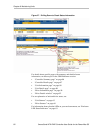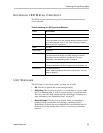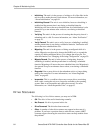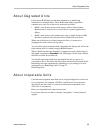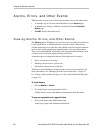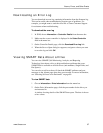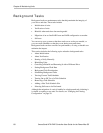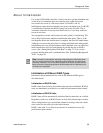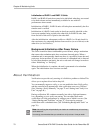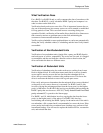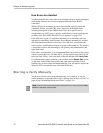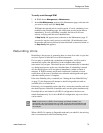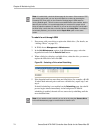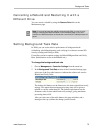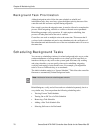
Background Tasks
www.3ware.com 69
About Initialization
For 3ware SATA RAID controllers, initialize means to put the redundant data
on the drives of redundant units into a known state so that data can be
recovered in the event of a disk drive failure. For RAID 1 and 10,
initialization copies the data from the lower port to the higher port. For RAID
5, initialization calculates the RAID 5 parity and writes it to disk. This is
sometimes referred to as background initialization or resynching, and does
not erase user data.
You can partition, format, and use the unit safely while it is initializing. The
unit is fully fault-tolerant while the initialization takes place. That is, if the
unit degrades before the initialization is complete, the data will remain intact.
Although you can use the unit while it is being initialized in the background,
initialization does slow I/O performance until completed. You can adjust how
much initialization will slow performance by setting the rate at which it
occurs. (See “Setting Background Task Rate” on page 75.) You can also
postpone initialization until a scheduled time. (See “Scheduling Background
Tasks” on page 76).
Initialization of Different RAID Types
Information about initialization for each of the different RAID types is
described below.
Initialization of RAID 0 Units
RAID 0 units do not need to be initialized and cannot be initialized. RAID 0
units are immediately available for use with full performance when created.
Initialization of RAID 5 Units
RAID 5 units will be automatically initialized the first time they are verified.
Regardless of the size, all RAID 5 units are fully fault tolerant upon creation.
These configurations use a specialized scheme for writing to the unit, which
does not have to be valid to provide fault tolerance.
RAID 5 units with 3 or 4 disks do not need to be initialized to have full
performance upon creation.
Note: Units will be automatically initialized using background initialization when
they are verified for the first time. (Verification requires that the units have been
previously initialized.) This will not affect the data on the drives, and the units will
perform normally, although performance will be slowed until the initialization and
verification are completed.




